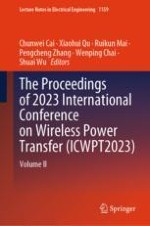2024 | OriginalPaper | Chapter
Theory and Method of Non-contact Electrostatic Gait Detection Based on Human Body Electrostatic Field
Authors : Sichao Qin, Weiling Li, Yu Qiao, Jie Bai, Jiaao Yan, Ruoyu Han, Pengfei Li, Xi Chen
Published in: The Proceedings of 2023 International Conference on Wireless Power Transfer (ICWPT2023)
Publisher: Springer Nature Singapore
Activate our intelligent search to find suitable subject content or patents.
Select sections of text to find matching patents with Artificial Intelligence. powered by
Select sections of text to find additional relevant content using AI-assisted search. powered by
